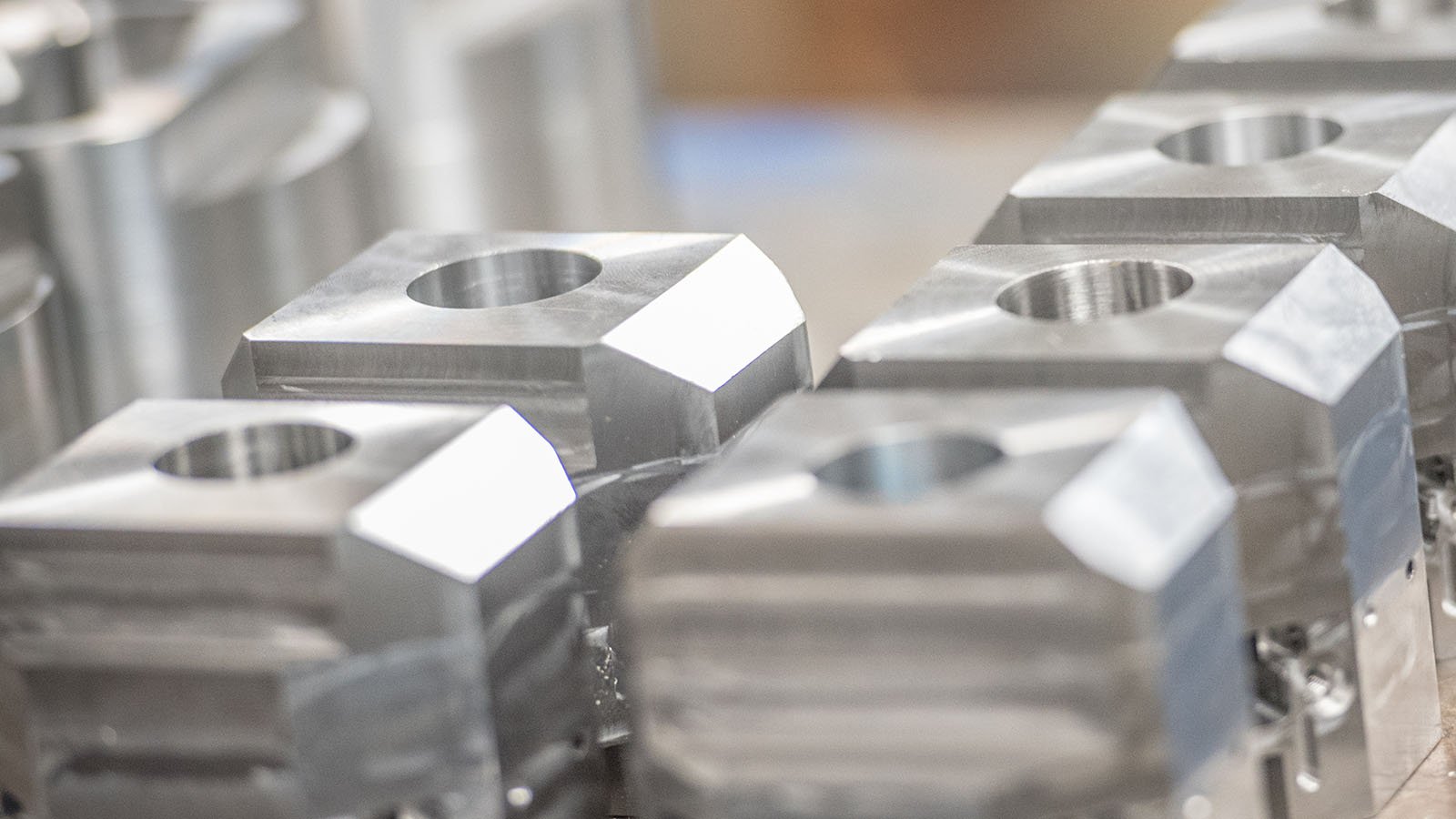When designing a component for CNC machining your going to select a material. In doing that, you’ll want to consider strength requirements, chemical resistance, thermal stability, cost, and other such factors. With so many materials to choose from, it may a little overwhelming. You’ll find that with a little guidance and research, you’ll be able to find the right material.
Start off by defining the most important characteristics of your part. How does it function? What will it be exposed to? How does it interact with other components? Generally speaking, most materials have been developed to serve specific purposes. Stainless Steel, for example, has many different grades. Some are great for tooling while others are designated as “food grade” and are widely used in food production and packaging. Below are some common material property categories, along with an explanation of each.
Mechanical Properties
The mechanical properties of materials are tested in many different ways. These include tests for hardness, brittleness, strength, and so on. Here are the most common tests and what they mean for a CNC machined component.
-
Brittleness: Highly brittle materials do not stretch or deform much before breaking. If your part needs to absorb some sock or require consistent flexing, a brittle material would not be a good choice. Think of this like the iron used to make a bridge. A bridge can twist and turn for decades without breaking. On the other end of the spectrum, a material like carbon fiber is strong but will hardly flex before it completely breaks.
-
Hardness: Harder materials resist scratching and indentation better than soft materials. Hard materials are good for wear components like bushings. Some materials can also be machined and hardened after. Keep in mind that material properties change if a material is hardened. For example, hardening a material is likely to make it more brittle. It’s also possible to harden the surface of a part with coatings.
-
Specific Weight (Density): Aluminum is much less dense than low carbon steel, which makes it about one third of the weight. Depending on the grades of material, aluminum may actually be stronger than steel when comparing by weight (strength to weight ratio).
-
Tensile Strength: The max stress a material can handle before failure. If you’ve designed a bracket connecting two components, think about how those components are interacting. Tensile Strength will represent the materials ability to resist breakage. Think tensile strength like a chain support a weight.
Chemical Properties
Corrosion resistance is the most commonly referred to chemical related material property. An example of corrosion is rust of ferrous metals. Keep in mind it’s possible to apply coatings that provide corrosion resistance. For example, nickle plating low carbon steel may be more cost effective than using a stainless steel.
Manufacturing Properties
Machinability is the how easily the material can be modified by cutting (machining). Aluminum, for example is very easy to machine and does not wear out tooling as rapidly as other materials. Therefore, aluminum is “cheap” to machine when compared to materials with lower machinability. This is an important factor to consider because it’s closely correlated with the expense of the part.
Thermal Properties
The most common thermal property is conductivity, which is the material’s ability to conduct heat. Materials with high thermal conductivity are better at transferring heat. If your component is used for a cooling application, it would be a good idea focus more on a material with high thermal conductivity.
Common Materials for CNC Machining
In cases where plastic components are larger, more complicated in design, and order quantities are low, CNC machining can be a better choice than Injection Molding. It’s also possible to injection mold a component and then machine details, like threads or undercuts as a post-molding operation. Plastics are easier to CNC machine and do not wear on tooling (unlike metals).
Common plastics for CNC machining:
- ABS
- Acetal
- Polypropylene
- Polycarbonate
Metals have diverse material properties which drive the performance characteristics of the final product. These various properties are great, but they should be balanced against raw material costs and machining cost. For example, if your part is specified to be stainless steel, you will find that there are several different grades of stainless steel that have large differences in both cost and material properties. Furthermore, some stainless steels are more cumbersome to cut than others, which means they will cost slightly more to CNC machine.
Common metals for CNC machining:
- Low Carbon Steel
- Aluminum
- Brass
- Stainless Steel
- Tool Steels
- Nickel-Chromium Alloy
Check out this page for more information on designing for CNC Machining.


